How to Use AI to Build a Website with Shopify: Complete Step-by-Step Guide

Table Of Contents
AI website builders make it easier than ever to create a Shopify store — no coding or design experience required. By using tools like EComposer, Shopify Magic, and Durable AI, merchants can plan, design, and launch a fully functional, SEO-optimized website in just hours. These AI tools automate everything from layout generation to content writing, while still allowing human creativity to guide branding and customization.
It previously took hours to create a Shopify site, and in 2025, it was officially time to game-change with the advent of AI. Using the appropriate AI tools, it is now possible to create, create, and launch a professional Shopify store within minutes.
In this complete step-by-step guide, we’ll show you how to use AI to build your Shopify website from scratch, explore advanced features, and share real examples of stores already powered by AI in 2025. Ready to turn your store idea into a fully built Shopify website — faster than you can say “Add to Cart”? Let’s get started.
What are AI website builders for Shopify?
AI website builders for Shopify are intelligent tools that use artificial intelligence to help merchants design, build, and customize their online stores automatically. Instead of manually editing themes, dragging elements, or writing code, you simply describe what you want — and the AI does the heavy lifting for you.
How they differ from Traditional Website Builders
Conventional Shopify developers use manual efforts; you select a theme, change colors, rearrange things, and make changes to each part manually. AI website builders, in their turn, will use natural language processing and machine learning to comprehend what you desire and create designs that suit your needs.
- Automation: AI builders automate design, content, and layout creation — traditional ones depend on human setup.
- Customization: AI tools learn from your brand preferences (logo, tone, color palette) to personalize results far beyond standard templates
- Learning Curve: Even beginners can use AI builders — no coding, no design expertise, just clear instructions or brand goals.
Types of AI Website Builders for Shopify
- Native Shopify AI Tools – Shopify itself now offers AI-powered features like Shopify Magic (for product descriptions, email content, and more) and Sidekick, an AI assistant that helps you manage and customize your store.
- Third-Party AI Builders – Tools like Durable, 10Web, or Bookmark connect with Shopify to create entire storefronts based on prompts or imported product data.
- AI-Enhanced Page Builders – Apps like EComposer are integrating AI assistants that can generate layouts, write copy, and optimize SEO — giving you creative control plus automation.
Core capabilities and limitations
|
Capabilities |
Limitations |
|
|
Why Use AI to Build Your Shopify Website? Key Benefits in 2025

Artificial intelligence isn’t just a trend in eCommerce — it’s now the fastest, smartest, and most cost-effective way to build a Shopify store. In 2025, AI tools will have evolved beyond simple design suggestions; they will now create fully functional, conversion-optimized websites in a fraction of the time it used to take.
- Dramatic Time Savings: AI cuts website-building time from weeks to hours. Instead of manually designing layouts or writing product copy, AI automates everything — saving you 20–40 hours on average. That’s an entire workweek you can spend marketing, not micromanaging pixels.
- No Coding or Design Barriers: You don’t need to be a tech pro. AI tools guide you with smart prompts, drag-and-drop editors, and instant previews, so anyone — from first-time sellers to experienced merchants — can launch a polished Shopify site without touching Liquid code.
- Conversion-Ready Designs: AI builders use data-driven design principles from top-performing eCommerce sites. Your store automatically gets optimized layouts, CTAs, and color schemes built to convert — no CRO handbook required.
- Built-in SEO Optimization: AI tools generate keyword-rich copy, meta tags, and alt text, plus suggest A/B tests and structure improvements. The result: a site that’s not just beautiful but discoverable and high-performing.
- Consistent, On-Brand Look: AI ensures your homepage, product pages, and collections all match perfectly. With uniform styling rules and templates, your brand feels professional and trustworthy — a key factor in boosting conversions.
- Cost-Effective Alternative: Skip the $1,500–$10,000 development bill. AI website builders deliver professional-quality designs for a low monthly fee, making them ideal for startups and small businesses that want premium results without premium prices.
- Always Up-to-Date: AI evolves constantly. With automatic updates and smarter algorithms, your Shopify site stays modern, fast, and optimized — no redesigns or extra effort required. It’s like having a designer who never sleeps (or charges overtime).
The Complete AI Shopify Website Building Process: Step-by-Step
Step 1: Define Your Store Strategy and Requirements
Prior to you touching an AI builder, clarity is your greatest asset. AI can create layouts and copy, though it requires guidance.
Start by creating a simple brand brief that includes:
- Your niche & goals: What are you selling and to whom?
- Brand identity: Tone (playful, minimalist, luxury), color palette, and logo style.
- Visual preferences: Gather inspiration from Pinterest or top Shopify stores in your niche.
- Competitor examples: Identify what works — and what doesn’t.
Pro Tip: AI tools like ChatGPT, Notion AI, or Tome can help you craft your brand voice or summarize your target audience personas before you move into design.
Step 2: Choose the Right AI Website Builder for Your Needs
Not all AI builders are equal — some focus on design automation, others on content creation or store optimization. In 2025, the top choices for Shopify merchants include:
- EComposer – Intuitive drag-and-drop builder with an AI Layout Generator, AI text writer, and seamless Shopify integration.
- Shopify Magic & Shopify Sidekick – Native tools built directly into Shopify for generating product descriptions, emails, and store setup help.
- Durable AI – Builds entire websites from a single prompt, ideal for solopreneurs or quick prototypes.
- 10Web AI Builder – Great for transferring existing websites into Shopify-compatible designs.
- Jasper or Writesonic – Strong AI copywriting tools to pair with page builders.
|
Criteria |
Recommended If… |
Example Tool |
|
Ease of use |
You’re a beginner or want visual control |
EComposer, Durable AI |
|
Customization |
You want branded layouts and control over sections |
EComposer |
|
AI content generation |
You need product descriptions & SEO copy |
Shopify Magic, Jasper |
|
Budget |
You prefer affordable or free tiers |
EComposer Free Plan, Durable Starter |
Step 3: Set Up Your Shopify Account and Install Your AI Builder
If you’re new to Shopify, start by:
- Visiting Shopify.com and signing up for a free trial.
- Choosing a plan that supports app installations (the Basic plan works for most).
- Install your chosen AI builder from the Shopify App Store.
Example: Search for “EComposer Page Builder”, click Add app, then follow the authorization prompts to link it to your store.
Once installed, open the app dashboard and complete initial setup (permissions, theme connection, default styling).
Other tools like Durable or 10Web will connect via API or plugin integration — just follow their onboarding wizard.
Step 4: Feed Your Business Information to the AI
AI is powerful — but it’s only as smart as the inputs you give it.
When prompted, provide key brand details such as:
- Business type: e.g., handmade jewelry, fitness apparel, skincare brand.
- Target audience: demographics, tone, style.
- Brand voice: friendly, elegant, bold, etc.
- Product information: categories, price range, unique selling points.
Helpful tools: ChatGPT or Notion AI for refining your brand brief or tagline.
Step 5: Generate and Select Your Store Design
Use your AI builder to generate multiple layout options. In EComposer, try the AI Layout Builder, which can instantly create homepage, collection, and product page templates that match your prompts.
Once generated:
- Compare options for visual hierarchy and brand fit.
- Mix and match sections or elements from different AI suggestions.
- Apply proven eCommerce design principles: Clear hero banner with CTA; Prominent product features; Trust signals (reviews, guarantees)
If you prefer more automation, Durable AI or 10Web can generate entire storefronts from one input.
Step 6: Customize and Refine Your AI-Generated Content
AI is fast, but your brand personality is what makes the difference.
- Review every headline, product description, and policy page.
- Edit text to ensure it reflects your brand tone.
- Replace generic visuals with your own product photography.
Step 7: Add and Optimize Product Pages with AI
AI makes it easy to scale product pages while keeping them consistent.
- Use Shopify Magic to generate product descriptions automatically.
- Apply EComposer’s AI Layout Builder for quick layout creation.
- Optimize visuals with tools like Remove.bg, Let’s Enhance, or Canva’s Magic Studio for background cleanup and lighting.
- Implement AI-powered upsell and cross-sell apps like ReConvert or LimeSpot to increase AOV (average order value).
Step 8: Implement AI-Driven Conversion Elements
Now, optimize for conversions.
Use AI tools to add elements that engage and convert visitors:
- EComposer’s Popups for promotions or newsletter signups.
- Fera.ai or Loox to add AI-driven social proof widgets.
- Shopify Flow + AI triggers for personalized CTAs or product recommendations.
- Tidio AI Chatbots to provide automated yet natural customer support.
Each of these tools uses AI insights to adapt messaging based on visitor behavior — boosting your conversion rate with minimal setup.
Step 9: Test, Launch, and Optimize Your AI-Built Store
Before hitting “Publish,” run through a pre-launch checklist:
- Check all links, images, and product data.
- Test checkout flow on desktop and mobile.
- Verify SEO settings (meta titles, alt text, and schema).
Once live, use AI-driven analytics to keep improving:
- Shopify Inbox Insights and EComposer Analytics show engagement data.
- Hotjar AI Reports visualize click maps and behavior heatmaps.
- A/B testing tools like Google Optimize or Neuralift AI suggest design tweaks based on real performance data.
Remember: AI develops quickly, but human strategy maintains expansion. If the reviews are not often performed, reevaluate your store message, images, and structure, and update them according to the changing customer knowledge.
Advanced AI Features for Shopify Website Building in 2025

Cutting-Edge AI Capabilities for Shopify
Modern AI builders for Shopify go far beyond simple drag-and-drop. They use generative AI, predictive analytics, and machine learning to create data-backed, high-converting stores automatically.
- Generate entire page layouts based on your niche and product type.
- Suggest product bundles based on customer browsing behavior.
- Dynamically adjust site design and copy to boost engagement.
Some platforms even integrate directly with Shopify Flow and Hydrogen, giving merchants a mix of automation power and headless flexibility — without needing to write a single line of code.
Advanced Personalization Using AI
Personalization has moved from “nice-to-have” to “non-negotiable.” AI now analyzes user data (like browsing patterns, purchase history, and time-on-page) to deliver customized product recommendations, tailored landing pages, and personalized discounts in real time.
For example, if a returning visitor previously viewed sneakers, your homepage might automatically showcase a new arrivals section in their preferred color and price range. The result? A 20–30% boost in conversion rates for many AI-powered stores.
Voice and Visual Search Integration
Voice assistants like Alexa and Siri have changed how customers shop — and Shopify’s AI ecosystem has caught up. In 2025, you can integrate voice search directly into your storefront, letting users find products by saying things like “Show me vegan leather bags under $100.”
Meanwhile, visual search tools allow shoppers to upload or snap a photo and instantly see similar products from your catalog. This “see it, find it, buy it” experience bridges the gap between social discovery and instant purchase — and it’s especially powerful for fashion, beauty, and home decor brands.
AI-Powered Customer Support
Say goodbye to clunky chatbots that can only handle “Where’s my order?” Today’s AI-driven support agents use natural language processing (NLP) to provide real-time, context-aware responses — from handling returns to giving style recommendations.
These smart bots integrate with Shopify Inbox and other CRM systems, learning from every interaction to improve accuracy and tone. Some even identify when it’s time for a human handoff, ensuring that customers always feel understood and supported.
Emerging and Future-Facing Technologies
2025 is also bringing experimental AI features that are currently in beta — and they’re worth watching closely. Some of the most exciting include:
- AI-generated product photos that automatically create high-quality visuals from text prompts.
- Emotion-driven analytics, tracking user sentiment to adjust site content dynamically.
- Predictive inventory tools that forecast stock levels based on seasonal demand, trends, and sales velocity.
- Autonomous A/B testing, where AI continuously experiments and implements the best-performing variations automatically.
While not all of these are mainstream yet, early adopters are already seeing faster growth and smoother operations.
Common Challenges When Using AI to Build Shopify Websites (And How to Overcome Them)
AI might be brilliant, but it’s not magic. While AI website builders can save you massive time and effort, they still come with their quirks, like that overeager assistant who sometimes gets your coffee order almost right.
Challenge: Generic, “Template-Looking” Designs
AI tools are great at generating fast layouts, but they often rely on design patterns used across thousands of other stores. The result? Your site might look... well, a bit too familiar.
How to Fix It:
Use the AI as your foundation, not your final draft. Once it generates a layout, tweak it by:
- Adjusting colors, typography, and imagery to align with your brand identity.
- Reordering sections or adding unique visuals like branded icons or lifestyle photos.
-
Incorporating storytelling elements, such as your brand journey or team highlights, that AI can’t replicate.
Challenge: AI-Generated Content That Feels “Off”
AI writing tools can produce decent product descriptions and headlines, but sometimes they sound robotic or lack emotional pull.
How to Fix It:
Use AI copy as your first draft — then inject your brand voice. Incorporate human elements such as jokes, stories, or sensual words to use (buttery-soft cotton, designed to give you confidence every day). Moreover, never forget to verify facts and product information. AI can be clever, but it occasionally hallucinates faster than a toddler with crayons.
Challenge: Limited Customization or Over-Automation
Some AI builders don’t allow deep edits beyond the suggested templates, leaving users feeling boxed in.
How to Fix It:
Choose AI tools that balance automation with flexibility. For instance:
- As integration platforms with Shopify, platforms that can connect directly with the theme editor (such as EComposer) can be customized to allow drag-and-drop customization once generated by AI.
- Check if the builder supports Liquid code or custom CSS injection for finer design control.
Challenge: Losing Brand Uniqueness
Relying too heavily on AI can make your store feel generic — especially if the same AI model powers dozens of competitors’ websites.
How to Fix It:
Keep your brand personality front and center:
- Upload your own photos, videos, and customer testimonials instead of relying solely on AI stock recommendations.
- Customize tone and messaging to reflect your brand’s values (playful, premium, minimalist — whatever fits).
-
Use AI for structure and efficiency, but your creativity for soul.
Challenge: Over-Automation vs. Human Insight
Too much automation can lead to decisions that look good on paper but miss the human touch — like suggesting upsells that feel pushy or irrelevant.
How to Fix It:
Balance data-driven automation with human intuition.
- Regularly review AI’s design and content suggestions to ensure they align with your audience’s real preferences.
- Monitor analytics and customer feedback to adjust what AI might miss.
-
Think of AI as your creative co-pilot, not your autopilot. You’re still the pilot flying the brand forward.
Case Studies: Successful AI-Built Shopify Stores in 2025
KOTN: Sustainable Fashion Brand with AI-Powered Personalization

What they did: KOTN used AI-driven personalization on their Shopify store to present dynamic/relevant product recommendations and content based on each visitor’s behavior and preferences.
Key takeaway: Use AI to tailor the shopping experience (recommendations + content) rather than generic “one size fits all” in niches where trust and sustainability matter, and personalization can significantly boost conversion.
Allbirds: Semantic Search & AI Recommendations

What they did: Allbirds integrated Shopify’s AI search/personalization tools (via Shopify Magic) on Shopify Plus. They improved site search so customers could enter queries like “vegan sneakers for casual wear”, and also used AI to recommend products by region, past purchases, etc.
Key takeaway: Improving site findability and relevance via AI search can reduce bounce and improve conversion — especially when visitors have a specific query or intent.
StyleCraft: AI-Generated SEO/Chatbot Visibility Boost

What they did: A fashion retailer with ~10,000 SKUs used the GEO (Generative Engine Optimization) platform by Relixir to boost their “AI answer-share” (i.e., likelihood of being referenced in AI assistants like ChatGPT, etc). They improved contextual mention of their brand, so when AI assistants gave recommendations, their store showed up.
Key takeaway: As AI assistants become more used for product discovery, optimizing for “AI-answer visibility” is a new frontier in e-commerce SEO. It’s not just about keywords for Google; it’s about being surfaced by generative/assistant-based channels.
Frequently Asked Questions
1. Do I need technical skills to use AI website builders for Shopify?
Not at all! That’s the beauty of AI website builders — they’re made for everyone.
Most AI tools offer drag-and-drop editors, pre-designed templates, and step-by-step guidance. You won’t need to touch Liquid code or CSS unless you want to fine-tune the details.
AI handles the heavy lifting — from creating layouts and writing copy to optimizing images — while you focus on your products, brand, and business growth.
2. How much does it cost to build a Shopify website with AI compared to traditional methods?
AI-powered website building is significantly more cost-effective than hiring a designer or developer. Here’s a quick comparison:
- Traditional development: $1,500 – $10,000+ for a full setup (depending on complexity and revisions).
- AI builder tools: Often range from $10 to $50 per month, with many offering free plans or trials.
Plus, AI drastically reduces the time you’d normally spend building pages — which is a cost saver in itself. In short, AI makes professional-level Shopify websites accessible to small businesses and solopreneurs alike.
3. Can AI-built Shopify websites rank well in search engines?
Absolutely — as long as you use AI wisely. Many AI website builders now come with built-in SEO features, such as automatic meta descriptions, image alt text, and structured data (schema). However, AI doesn’t replace SEO strategy. You’ll still need to:
- Research and apply your target keywords manually.
- Ensure content remains natural and valuable to readers (not just optimized for bots).
- Keep your website speed, accessibility, and mobile experience top-notch — all factors Google loves.
AI provides the foundation, but real SEO success comes from ongoing optimization and quality content.
You may also like
- How to use AI to Build A Shopify Store
- Top 10 Best Free AI Human Generators
- What is AI in Ecommerce? Definition, Benefits & Comprehensive Apps
- How AI Personalization Is Transforming eCommerce
- 9 Best AI for Shopping To Save Time And Money
In a nutshell
Artificial intelligence is not eliminating creativity; it is enhancing it. EComposer, Shopify Magic, and Durable AI, among other tools, have transformed what was previously a lengthy and technical process into a quick, intuitive, and even exciting experience in 2025. It takes nothing more than a vision and an appropriate AI assistant on your side to open up a professional Shopify store without the need to use the toolbox of a developer. Then, whether starting your first online business or redesigning your fifth, it is time to welcome AI and leave it to do the heavy lifting, and instead of spending time on it, you do what matters, which is expanding your brand and reaching your customers.



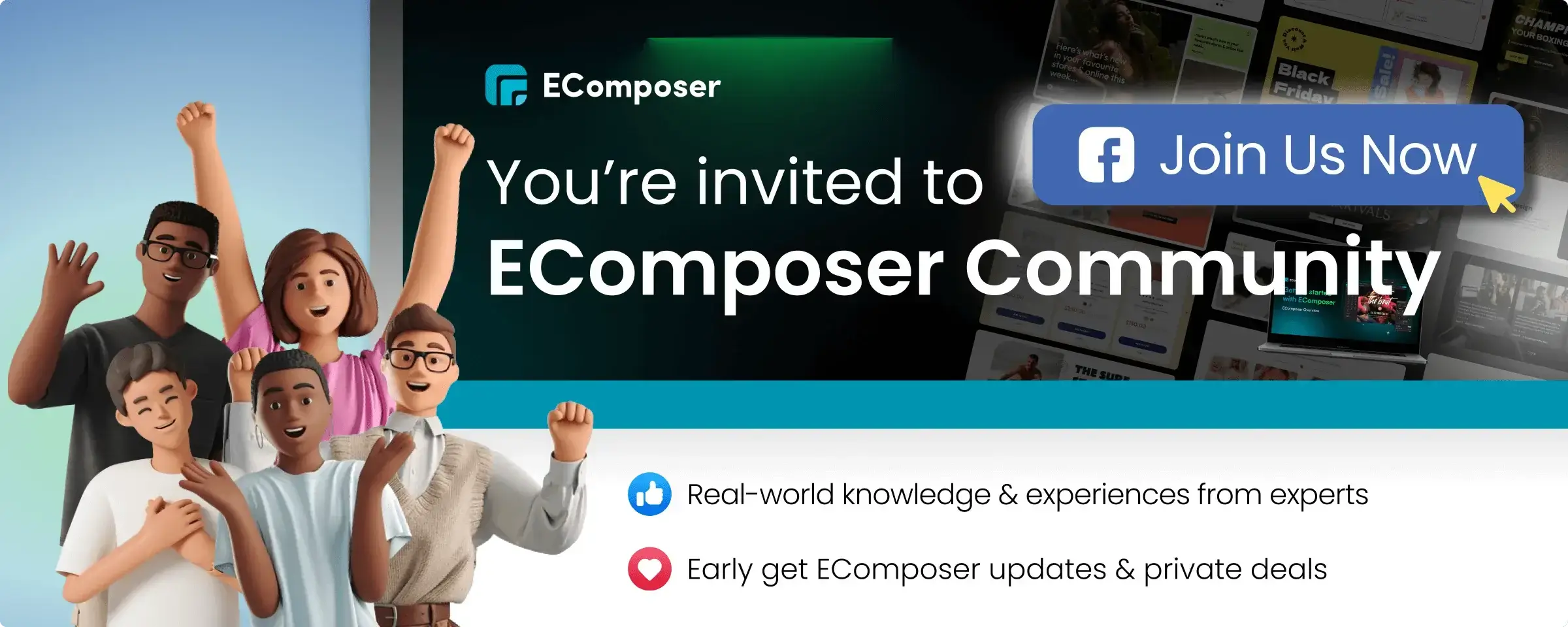





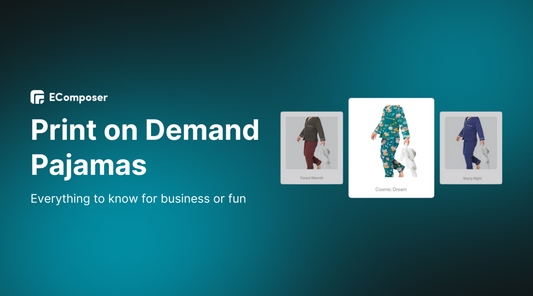
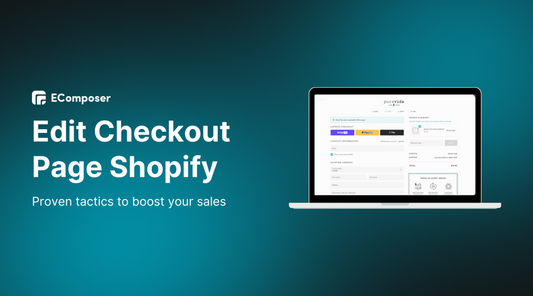
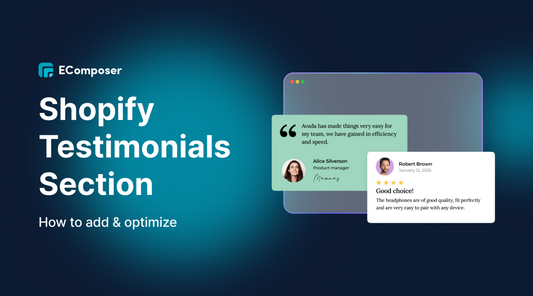

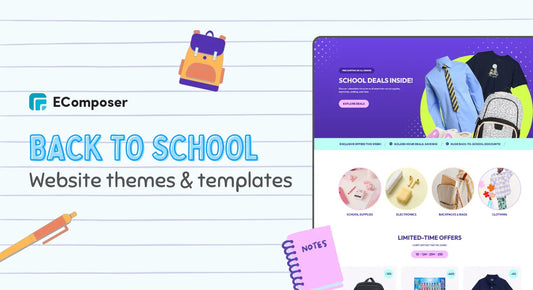
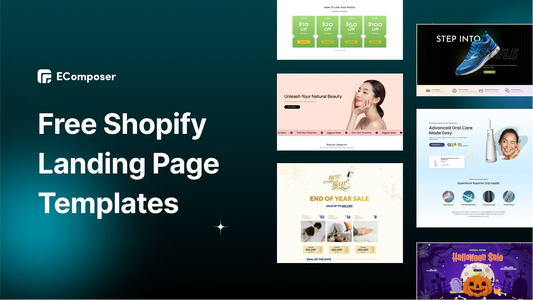







0 comments